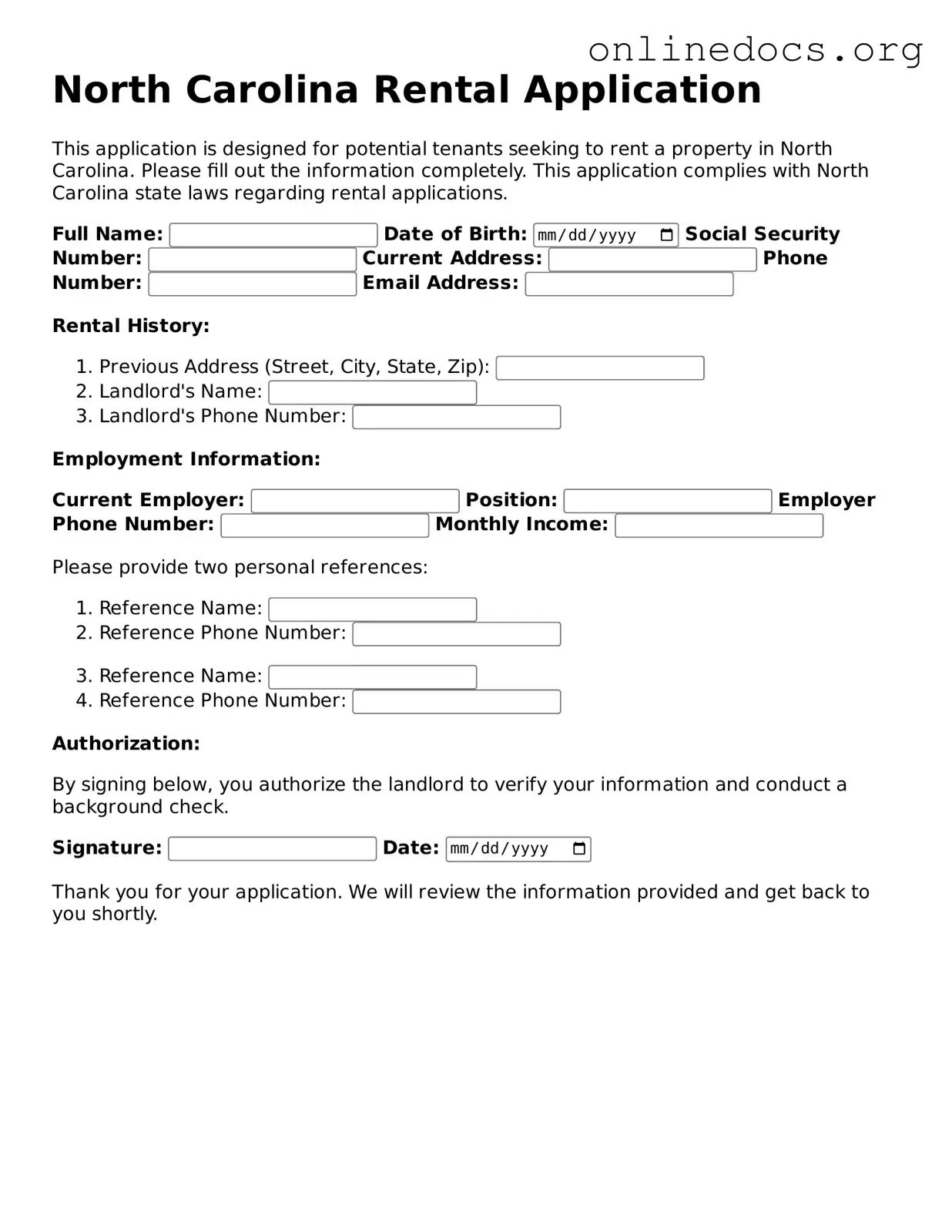The North Carolina Rental Application form shares similarities with the standard Lease Agreement. Both documents serve as foundational elements in the landlord-tenant relationship. The Lease Agreement outlines the terms and conditions under which a tenant can occupy a property, while the Rental Application gathers essential information to determine if a prospective tenant is suitable for that lease. Each document is critical in establishing expectations and responsibilities, ensuring that both parties understand their rights and obligations.
To simplify the process of purchasing a motorcycle in Arizona, it's important to have the proper documentation, including the Arizona Motorcycle Bill of Sale. This legal form not only facilitates the transfer of ownership but also provides the necessary proof for both parties involved. For those interested in ensuring this transaction is smooth and legally recognized, it is advisable to download a blank form that can be filled out accurately.
Another document comparable to the Rental Application is the Tenant Screening Report. This report provides an in-depth analysis of a potential tenant's background, including credit history, rental history, and criminal background checks. While the Rental Application collects initial information from the applicant, the Tenant Screening Report offers a more detailed examination. Landlords often rely on both documents to make informed decisions regarding tenant suitability.
The Eviction Notice is another document that shares a connection with the Rental Application. Although it serves a different purpose, both documents are integral to the rental process. The Eviction Notice is issued when a tenant violates the lease terms, while the Rental Application helps prevent problematic tenants from entering into a lease. Understanding the rental history provided in the application can help landlords avoid future eviction situations.
The Rental Agreement Addendum is also similar to the Rental Application. An addendum is used to modify or add specific terms to an existing lease agreement. While the Rental Application is focused on gathering tenant information, the addendum may include additional stipulations that were not covered in the original lease. Both documents work together to create a comprehensive understanding of the rental terms.
The Move-In Checklist is another document that complements the Rental Application. This checklist is used to document the condition of the property before the tenant moves in. While the Rental Application assesses the tenant's qualifications, the Move-In Checklist ensures that the property is in good condition and that both parties agree on its state. This can help prevent disputes over damages when the tenant moves out.
The Security Deposit Agreement is closely related to the Rental Application as well. This document outlines the terms under which a security deposit is collected, held, and returned. The Rental Application may indicate the amount of the deposit required, and both documents work together to protect the interests of the landlord while ensuring the tenant understands their financial obligations.
The Pet Agreement is another document that often accompanies the Rental Application. If a landlord allows pets, this agreement specifies the rules and conditions regarding pet ownership on the property. The Rental Application may inquire about pets, and the Pet Agreement formalizes the terms under which pets are permitted. Both documents ensure that tenants are aware of any additional responsibilities they may have.
Lastly, the Rental History Verification form is similar to the Rental Application in that it seeks to confirm the information provided by the applicant. This form is typically filled out by previous landlords to verify a tenant's rental history. While the Rental Application collects this information from the tenant, the Verification form serves as a means to authenticate it, providing landlords with a clearer picture of the applicant's past rental behavior.
